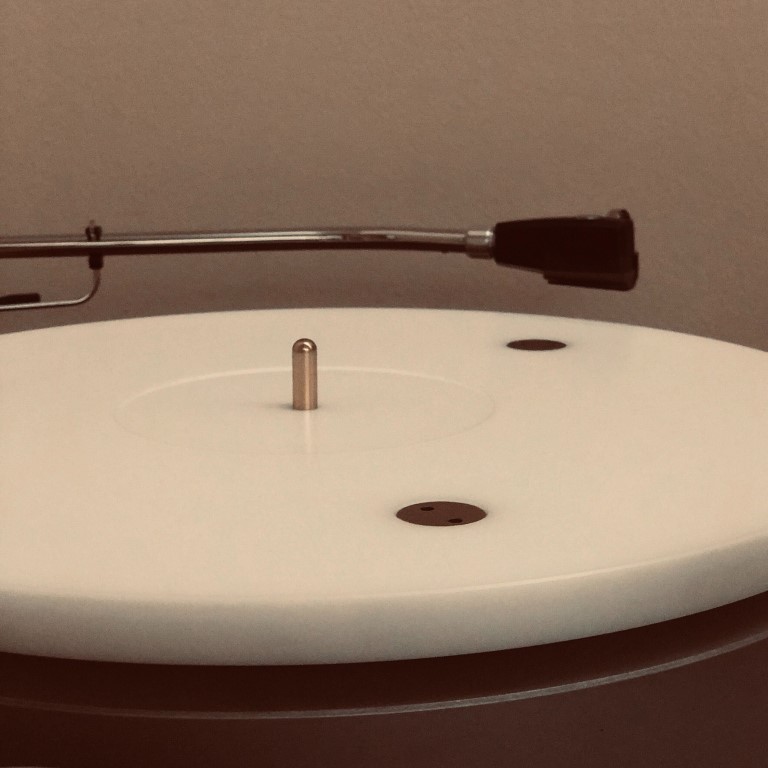My preference has lately been towards flat hard surfaces to directly interface with te record, but I am sure my setup is fairly atypical.
The first two turntables I had precipitated the use of thick felt mats due to the nature of their design - the first one had a ringy stamped metal platter, and the second one had a platter machined out of MDF (I am still appalled by this). Both used a screw down clamp but the actual thickness of the mats allowed for a pretty good contact coverage throughout the surface of the record.
For the third (and last commercial) turntable I moved to an all acryllic platter which had a record weight and a label relief - I was glad to be rid of the mats because I felt that those mats caused more issues with playback due to dust retention and derived static than they helped with damping and record contact. Most my records are fairly flat and I had no real reason to concern myself with mats or the quality of the platter surface.
But when I built my current turntable, since the effort was mostly about research, I spent quite some time on researching proper platter contact. I had а very crude, but turns out effective method - I used very sensitive carbon paper between the platter surface and the record to see what is the possible pattern of platter-to-record contact. I made no record of those patterns (as I probably should have), but аs
@Tony L rightly assumed, in most situations, platter to record contact (
without clamping) is minimal and focused (in my "researched" cases) around the middle groove.
So I devised the following:
The top platter is machined out of Polyoxymethylene (Delrin is one of the trade names of POM), which is a much more pliable platter-to-record interface than pretty much any modern used platter material save for actual PVC for direct (no mat) contact. I machined a platter relief, but I also designed it to feature three supports (you can see two of them on the photo) which serve a double purpose - primarilly to support the top platter - but a secondary optional purpose is to support the record.
Using a screw-driver-like-tool, I can move the supports to either dive in the POM or to protrude slightly. This way, I can choose between having the record resting on only three points (the surface of each support is close to 1/4 inch square), or directly resting on the platter.
So I tried having:
- Record on three points, no "clamping";
- Record on three points, "clamping" via a extra wide (80mm diameter) record weight;
- Record on entire platter, no "clamping";
- Record on entire platter, "clamping" via a extra wide (80mm diameter) record weight.
In my experience, with that setup, the best results were achieved with option #4, which is what I've resigned to live with. One advantage of the POM also is the fact that it lends itself to cleaning very well, does not trap (or help embed in records) dust and is more eager to be micro-scratched than the record itself, which is a win.





